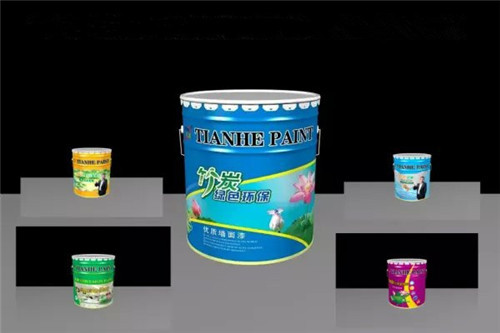The times are constantly improving. Everybody cares more and more about the body. Every item that will be used in daily life must meet standards. For example, paint is an exterior material for walls or furniture. Currently, there is a kind of water-based preservation. Paint, with anti-corrosion effect, is mainly achieved by preventing water vapor from permeating the paint film. It is in line with the current environmental protection concept and is favored by many consumers. What are the advantages and disadvantages of water-based anti-corrosion paint ? What are the water-based anti-corrosion paint construction methods? Lets come look! Water-based anti-corrosion paint is good advantage: Compared with traditional paints, it is a relatively new product and has been favored by many consumers since its launch. What is water-based anti-corrosion paint? It is made of water-based anti-corrosion special resin, pigment filler, imported anti-rust pigments and functional additives. It does not contain any heavy metals such as lead, chromium, mercury, etc. The finished product has excellent anti-corrosion properties. Used in bridges, oil pipelines, ships, towers, steel structures and chemical, electrical facilities and other fields that need to be preserved. From this point of view, it does have many advantages that other paints cannot match, and it should show an upward trend in future applications. In addition, water is the main solvent of the water-based anti-corrosion paint and can be directly used for cleaning and dilution. Therefore, almost no solvent taste and low cost can save time and reduce indoor ventilation troubles. Disadvantages: The above are all advantages, but they are not perfect. They are also imperfect, that is, the moisture evaporates slowly when the temperature is low and the humidity is high. In view of the large water tension, it is necessary to add additives to the formulation to improve the paint. The wettability of the film to the pigment and the base material, but has an effect on the water resistance and permeability of the paint film. In addition, it freezes below 0°C. Water-based anti-corrosion paint construction method 1, brushing In general, the construction methods of paints are similar, such as brushing and spraying. They have their own characteristics and they are introduced briefly. The first is brushing. This type of operation is convenient and adaptable. It allows the paint to penetrate into the pores and crevices. Even small areas are suitable. However, when there are rough welds, pinholes are likely to occur. Then we should brush it first and then work together with other places for the second time so as to ensure smoothness. 2, spraying This kind of construction method is more advanced because it requires the use of professional equipment, but it should be noted that the spraying pressure should be in the range of 0.25-0.5Mpa and the nozzle pressure should be controlled in the range of 12-15Mpa. During the construction, the thickness of the coating shall be traced and checked. If the thickness does not reach the specified standard, the coating shall be applied in time and the protection should be done before the film is dry. This can prevent contamination. After the completion of spraying, acceptance shall be carried out. The paint shall have no traces, no leakage, no unevenness in paint film thickness, uniform color and no defects such as roughness, sagging, cracks, bubbles, peeling, etc. Summary: The above is the waterborne anti-corrosion paint related knowledge Xiaobian brings to you today, I believe that my friends have a certain understanding, the characteristics of water-based anti-corrosion paint and precautions we can refer to, I hope this article has for you Help me. DAYUE manufactures a huge range of Machined Parts, Gears and Racks for many diverse industries around the world. Gear Grinding gear shafts,Spur gears,helical gears,bevel gears,Spiral bevel gears,worm gears and worms,Gear ring gear sleeve gear ring,Powder metallurgy gears,Sprocket,eccentric gears. Dayue Precision Technology (Dongguan) Co., Ltd. , https://www.dayuechn.com



DAYUE has more than twenty years of gear manufacturing experience and state-of-the-art manufacturer technology, complete with CNC Turning, milling, broaching and grinding. We deliver extraordinary capabilities to our valued customer base from metal industry types. From custom cutting to fresh improvements of your new product, we have the required production experience your project requires.
Gear Cutting
To precisely cut gear teeth, we fully equipped with top of the line Gleason Phoenix CNC tooth cutting machines. Also, we have Gleason Phoenix and Lorenz systems Machines for gear hobbing and gear shaping.
Gear Grinding
Precision tooth grinding of custom gears will result in parts that operate quietly and wear evenly (an OEM production note for high speed gear boxes and automotive applications). Our custom transmission gear tooth grinding capabilities include high production line capacity with the expertise of holding very tight tolerances. This accuracy of within 20 millionths of an inch, or one half of a micrometer are efficiently monitored with these cutting edge machines.
Custom Gear Manufacturing Capabilities & Tolerances
Spur gears: Up to 24″ Diameter and Metric size 600mm
bevel gears: Up to 24″ Diameter and Metric size 600mm
General Turning: Up to 24″ Diameter and Metric size 600mm
Worm Gears: Up to 24″ Diameter and Metric size 600m
Turning: ±0.0002″ and Metric size ±0.005
Milling: ±0.0005″ and Metric size ±0.005
Hobbing: AGMA Q14
(You can also choose to use WEDM processing, the tolerance can reach 0.002)